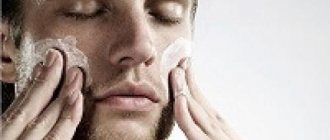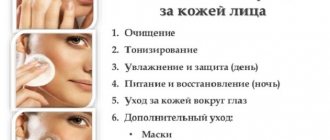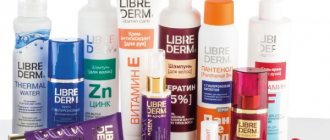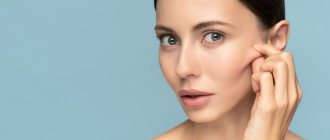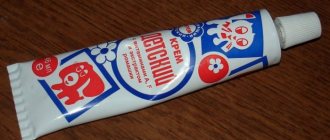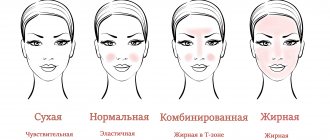Causes of dry skin in newborns
Among the medical problems of dry skin in children, perhaps the first place is occupied by atopic dermatitis. The disease is based on a genetic defect in barrier function, resulting in increased loss of moisture. The disease begins at an early age and is characterized by dryness, itching, and during periods of exacerbation - the appearance of inflammatory foci. If an exacerbation must be eliminated with medications, then in the period between exacerbations, the care recommended by the doctor must be carried out daily. Typically this is the use of emollients.
LIPIKAR BAUME AP+M
Lipid-restoring balm for face and body
Relieves dry skin in children. Instantly soothes atopic skin, reduces itching and irritation, and increases the intervals between outbreaks of excessive dryness.
581 rub. more details
Ichthyosis is another cause of dry skin in newborns. This is a congenital disease, which is accompanied by a violation of keratinization of the upper layer of the epidermis. As a result, fish-like scales can form on the body, hence the name of the disease. This is not a very common disease, it can occur in different ways, from mild manifestations to severe conditions requiring constant therapy.
Diseases of the endocrine system (underfunction of the thyroid gland, diabetes mellitus), helminthic infestation, some diseases of the gastrointestinal tract, deficiency of certain vitamins A and PP are also reasons why a child has dry skin. Regular monitoring of the baby, periodic examinations by a pediatrician, and timely treatment, if required, will allow these causes to be suspected and eliminated in a timely manner.
If a child has dry skin on his body, there are other reasons. In the first month of a baby’s life, physiological dryness of the skin may develop. In utero, the child is in an aquatic environment, and after birth it moves into an air environment, and it takes time for the baby to adapt. The main cause of this condition is the insufficient functioning of the sweat glands, which begin to activate after birth. Physiological dry skin can manifest itself in the form of peeling all over the newborn’s body. Gradually, over the course of a month, this physiological condition disappears. After water procedures, it is enough to moisturize the baby’s skin with a light cream or special milk. For example:
LIPIKAR LAIT
Unscented milk for dry to very dry skin
Nourishes and restores the lipid barrier of the skin. Suitable for small children and babies.
992 rub. more details
But if the skin of a one-year-old baby is excessively dry, this is a reason to consult a doctor to get recommendations for care to avoid the development of complications.
Any inflammatory process, be it a cold or a more severe condition, accompanied by a rise in temperature contributes to the loss of moisture from the body. Dyspeptic symptoms, insufficient drinking, frequent diarrhea or poisoning of the child are accompanied by loss of fluid, and, as a result, dehydration develops. One of the manifestations of this condition will be very dry skin in a child, which can be corrected by moisturizing the face and body with baby light cream or milk.
Only after the age of 6 years does a child’s skin become like that of an adult. And before this age, it is characterized by high permeability and therefore loses natural moisture much easier and faster. It is more vulnerable to injury, and through damage it can become infected, especially in infancy. Therefore, it is important to carefully monitor and care for her every day.
If your baby develops areas of irritation or dryness as a reaction to food, contact with a substance, or after being in the sun, we recommend that you consult a doctor. The causes and treatment are always different, and the wrong medications and creams can lead to serious skin lesions.
Hives
In appearance, this reaction is similar to traces of a nettle burn; the skin becomes rough, bumpy, swells, sometimes blisters appear (and sometimes the matter is limited to swelling). The rashes are itchy and may be painful to the touch. The skin and mucous membranes are affected, the rash can spread throughout the body, on the back and abdomen, or be located only in certain areas (for example, with increased sensitivity to ultraviolet radiation, solar urticaria appears only on open areas of the body).
Hives can be triggered by food allergens (honey, citrus fruits), medications, insect bites, even cold and sun.
What distinguishes urticaria from skin diseases is the rapid appearance of many elements, while in skin diseases the rash begins with 1–2 elements and spreads over some time. Also, unlike skin diseases, rashes with hives last 1–2 hours, after which they disappear. The danger of this condition is that swelling of the mucous membrane can spread to the tissues of the larynx and impair breathing - this is called Quincke's edema. This condition requires immediate medical attention.
To treat urticaria, it is necessary to eliminate the allergen and take an antiallergic drug (loratadine, fexofenadine, cetrin). For food allergies, sorbents (Smecta, Polysorb, Enterosgel, Filtrum) are recommended; they will bind some of the allergens, preventing them from entering the blood. Fenistil can be used topically.
External factors that cause dry skin in a child
Dry skin in a one-year-old child may not only be due to medical problems. Improper or excessive care, too frequent bathing, poor nutrition, and climate affect the condition of the dermis. Using very hot water or very hard water when washing will dry out your skin. We recommend paying attention to special mild detergents, monitoring the water temperature when bathing (not higher than 37°C), choosing soft towels and using a moisturizing or nourishing cream after a bath.
Another external cause is dry air and overheating. Thermoregulation processes in babies are poorly developed and continue to develop after birth, so the baby cannot quickly and adequately respond to overheated air or excessive wrapping. This is also due to the fact that the sweat glands after birth do not function sufficiently and have underdeveloped ducts. First of all, the formation of sweat glands ends on the forehead and head, then on the chest and back. The formation of the sweating function occurs over 7 years.
It is recommended to use a humidifier at home, especially in winter when the heating is running (the recommended humidity in the room should be 40-70%) and preference for light clothing that does not allow overheating (sometimes the easiest way to determine may be to feel your back and neck under clothing - they should not being hot or wet, as well as red cheeks in a baby with normal, non-rough skin are signals of overheating).
Another feature is the incomplete formation of melanin in children, a pigment that protects the skin from UVA rays. Therefore, until the age of 6 months, the baby should avoid direct sunlight, and at an older age, do not forget about sun protection. Up to a year, a child can be in the open sun for no more than five minutes a day, and only with a special children's sunscreen. Ultraviolet light dries out the skin and also increases the risk of cancer.
Frost and cold air are another challenge. Under the influence of bad weather in autumn and winter, the development of redness, dryness, peeling and irritation of the skin is possible. What to do to avoid dryness? Use cold cream (or emollient) about 20-30 minutes before leaving the house to prevent chapping of your baby's face and hands.
If your child’s dry skin lasts for a long time, you should first contact your pediatrician to rule out various diseases. If you have a skin rash, you may need to consult a dermatologist. Following your doctor’s recommendations, as well as proper daily care, will help you cope with dryness.
Allergic diseases
Allergy is one of the main problems of our time: according to WHO, a third of the population of developed countries already suffers from one or another of its manifestations, and in the future the number of such patients will increase. Proponents of the hygienic theory of allergies believe: the problem is that we live in a too clean, almost sterile world, and the immune system, due to the lack of real “enemies,” attacks the proteins of its own body.
Allergic reactions and diseases associated with excessive allergic readiness of the body often manifest themselves on the skin.
Rules for caring for dry baby skin
Caring for a child’s skin during the day consists of several stages: washing the face, washing hands, washing intimate areas after each bowel movement, and bathing.
It is permissible to bathe a baby every day, as it not only cleanses the skin, but also calms the child, strengthens him, awakens his appetite, improves tactile and emotional skills, and improves psychological contact with parents. One of the mistakes parents make is bathing their child for a long time in a bath with potassium permanganate. Such bathing dries out the skin and is not advisable to use. Contraindications for water procedures are high body temperature and the presence of purulent-inflammatory diseases or open wounds on the body.
Bathing water should be soft and, if necessary, filtered. The water temperature should also not be high; it is optimal if it is 34-37° C. In order not to damage the protective hydrolipidic layer of the baby’s skin, it is not recommended to use bathing products every day. Pay attention to special products for babies that have delicate formulas and have been tested by pediatricians and dermatologists.
LIPIKAR GEL LAVANT
Soothing shower gel with protective properties
Soothes the skin, thanks to the action of Niacinamide and the lipid-restoring properties of Shea Butter, helps restore the skin's protective barrier. Suitable for cleansing the skin of the face and body, does not irritate the eyes.
719 rub. more details
This gel can also be used to cleanse babies' heads and for daily intimate hygiene when changing diapers. Washing should be as gentle as possible; it is not recommended to use washcloths made of rough materials.
After bathing, dry the body and apply a moisturizer. The towel should not be hard, you should not rub the baby’s skin too much, it is better to gently blot away excess moisture. You can use a terry bathrobe. During the first 3-5 minutes after bathing, while the skin is still damp, it is advisable to apply a moisturizer. You can use Lipikar Lait milk . It has a rich formula based on cold cream - a classic combination of protective lipids, enriched with Shea butter (10%) to restore the lipid barrier. Suitable for very dry skin of children and adults. And niacinamide provides long-lasting comfort to even the driest, most delicate and sensitive skin.
Create a favorable microclimate in the room where the child is. The air should not be dry, the temperature should not be higher than 18-22°C. Monitor the humidity, ideally if it fluctuates in the range of 40-70%. To maintain humidity, you can purchase a humidifier. During the heating season, it is necessary to shield the batteries; you can cover them with a wet towel to evaporate moisture.
Choose clothes made of cotton fabric, it breathes well and absorbs excess sweat well. Give air baths while changing diapers. When walking, do not wrap your baby tightly to avoid sweating.
During the summer, avoid going out in the sun during the hottest hours, from 11 a.m. to 4 p.m., or when the ultraviolet index is above 4 (just check this indicator in the Weather app on your smartphone or almost any website to determine the weather forecast). Be sure to wear a Panama hat or a hat for your child to protect from the sun; on the beach, it is better for your child to wear a closed swimsuit or T-shirt. Do not neglect sunscreens; choose them according to the child’s age. Be sure to reapply the cream every few hours according to your child's skin type and sun exposure that day. When you return home, wash off any remaining sunscreen and apply moisturizing milk to your skin. For mild sunburn or redness of the skin, you can use:
CICAPLAST BAUME B5
Multi-regenerating and healing product for baby skin
Due to its rich, nourishing texture, it protects the skin and creates a barrier that prevents bacteria from reaching the surface. Panthenol in the composition promotes the healing of irritated skin.
654 rub. more details
When to consult a doctor
There are situations when a child needs immediate medical consultation. You need to make an appointment if dry, rough skin is accompanied by one of the following conditions:
- Bleeding from cracked skin.
- Severe itching that makes the child restless.
- Pus or yellow discoloration on dry, rough skin.
- Swelling of the skin.
- Dry, very rough skin is accompanied by fever.
- Dry skin causing colic outbreaks.
- These pathologies are treatable and it is important not to delay their elimination so that complications do not arise.
What to do to prevent your child's skin from drying out
Preventive measures against dry skin:
- regular care;
- drinking regularly;
- balanced diet with sufficient vitamins;
- use of special soft care products tested by pediatricians and dermatologists.
Baby bathing and care products are marked on the packaging: “suitable for the use/care of the skin of infants and children”, “suitable for children” or the like. Plus, as a rule, the production of children's products is subject to higher requirements for the safety of formulas and stricter selection of components included in the formula.
